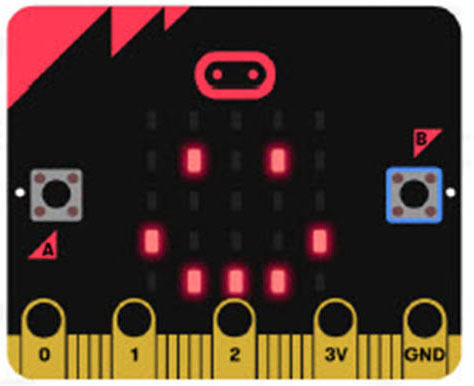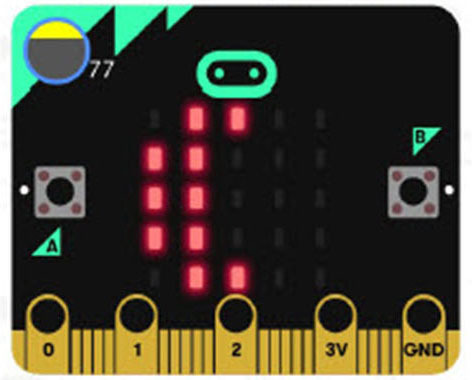Table 2.
Lesson plan design—integrated learning environment.
| Units | Unit 1 | Unit 2 | Unit 3 |
|---|---|---|---|
| Objectives | - First program with makecode - Getting familiar with the micro:bit - Connect the micro:bit to USB/power - Transfer program to micro:bit |
- Event-driven programming, Loops - Animate screen - Clear screen - Reset micro:bit - Display text - Repeat Loop |
- Conditional programming, variables, sensors - If-then-else - Using accelerometer, light sensor - Using sound (computer only, micro:bit v1) |
| Activities | - Tutorial “flashing heart” - Hands-on micro:bit: computer connection with USB-cable - Drag and drop .hex program file onto micro:bit (USB) - Draw/display smiley - Draw/display stick figures |
- When button A pressed → display built-in figure - When button B pressed → display other figure - When button A+B pressed → clear screen - When program reset/started → display single dot or letter - Animate Display → loop two figures |
- Tutorial “rock, paper, scissors” → when “shaked” - Tutorial “sunlight sensor” → LEDs - When button pressed → play melody - Compose own melody |
| Physical computing | - Giving shape to algorithms - Use self-drawn stick figures |
- Interact with device using buttons - Animate Screen |
- Make the device feel (Shake, Light) - Make the device sound |
| Computational concepts | - Sequences - Loops (simple) - Events (on-start) |
- Loops (advanced) - Events (buttons) |
- Conditionals - Events (shake) - Variables (Data) |
| Computational practices* | - Being incremental and iterative | - Testing and debugging | - Reusing and remixing |
| Computational perspectives* | - Expressing | - Connecting | - Questioning |
| Learning outcome | 1 
|
3 
|
5 
|
2 
|
4 
|
6 
|
“Computational practices and perspectives” are trained throughout the entire intervention and are not explicitly matched to specific units.
For example, “Testing and debugging” can occur early or later on depending on the first result.
The same applies to “Connecting” and asking for help from seat neighbors, et cetera.
These CT aspects are interwoven with the inquiry-based constructionist learning process and are present across all units.
Figures 1 and 2: Heart – Grin: Sample artifact for unit 1 with block-based Makecode programming environment. Source: Micro:bit Educational Foundation, 2022, https://makecode.microbit.org/_7rLK17EcuXko. Reproduced with permission. Figures 3 and 4: Maxi1 – Max2: Sample artifact for unit 2 with block-based Makecode programming environment. Source: Micro:bit Educational Foundation, 2022, https://makecode.microbit.org/_a4tfis7zuVsj. Reproduced with permission. Figures 5 and 6: Moon – Sun: Sample artifact for unit 3 with block-based Makecode programming environment. Source: Micro:bit Educational Foundation, 2022, https://makecode.microbit.org/_D6agprWL4iWv. Reproduced with permission.
